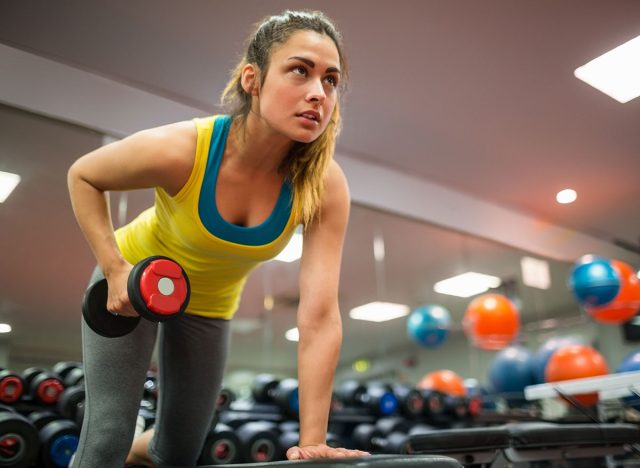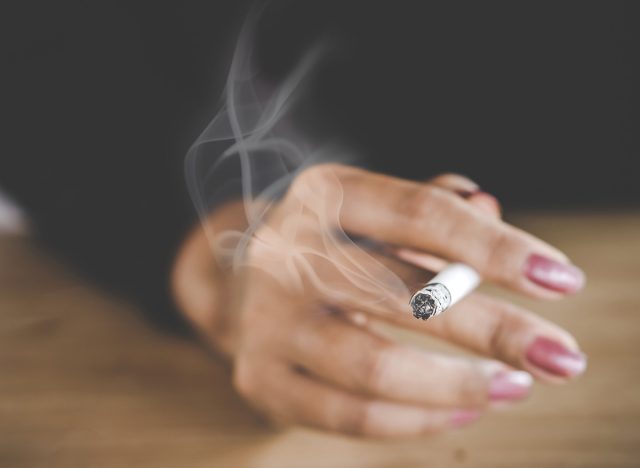8 Daily Habits for a Stronger Immune System

A strong, balanced immune system is crucial to overall health, and by making just a few simple lifestyle changes can make a real difference. "Your immune system fights everything from cold and flu viruses to serious conditions such as cancer," says the CDC. "Immune systems are complex and influenced by many factors." Here are eight daily habits to support your immune system.
Regular Exercise

Exercise is good not just for your immune system but for overall health and happiness. "Regular exercise is one of the pillars of healthy living," Howard E. LeWine, MD, tells Harvard Health. "It improves cardiovascular health, lowers blood pressure, helps control body weight, and protects against a variety of diseases. But does it help to boost your immune system naturally and keep it healthy? Just like a healthy diet, exercise can contribute to general good health and therefore to a healthy immune system."
Healthy Diet

A healthy diet is key to a strong immune system. "Incorporating a healthy diet ensures your body is getting the vital antioxidants, vitamins, and minerals, including A, C, E, B6, potassium, and zinc, it needs to produce infection-fighting white blood cells," Edward Pankey, MD, tells Summa Health. "A balanced diet includes a variety of fruits and vegetables, lean meats, whole grains, and low-fat dairy. Eating well also means limiting saturated fats found in high-fat meats and dairy and cutting back on your salt and sugar intake."
RELATED: 20 Delicious Foods to Boost Your Metabolism and Lose Weight
Good Sleep

Sleep is essential for immune health. "Scientific evidence is building that sleep loss13 can negatively affect different parts of the immune system," says the CDC. "This can lead to the development of a wide variety of disorders."
Stress Management

Unchecked, chronic stress can impact your immune system. "Chronic stress reduces your ability to ward off germs," Dr. Pankey says. "When you're stressed, your body produces higher levels of the hormone cortisol, which suppresses your immune response by decreasing white blood cell production. Getting plenty of sleep and incorporating stress-relieving techniques, such as yoga, meditation, exercise, and talk therapy, are key to keeping your stress in check."
Stay Hydrated

Drink plenty of water to support your immune health. "Water is important because our blood and lymph, which have immune cells in them, need water in order to flow to circulate throughout our bodies," Allergy & Immunology doctor Chen Lin, MD, tells Houston Methodist.
Protect Your Gut

Experts say your gut health can impact your immune health. "The majority of the immune system is found in the lining of your intestine, so it's a good idea to support your gut and microbiome with lots of good bacteria," David M. Goldberg, MD, tells NewYork-Presbyterian. "A well-rounded, balanced diet, like the Mediterranean diet, that includes vegetables, lean meats, and healthy fats, is another way people can improve their immune system."
RELATED: 20 Superfoods for People Over 50
Don't Smoke

Smoking is terrible for your immune health. "Smoke from cigarettes contains more than 7,000 toxic chemicals that can harm white blood cells, making you more susceptible to infection," Dr. Pankey says. "In addition, excessive alcohol use weakens the immune system."
Watch Your Weight

Maintain a healthy weight to support your immune system. "Obesity, defined as a body mass index (BMI) of 30 or more in adults, is linked to impaired immune functions," says the CDC. "Safe ways to help maintain a healthy weight include reducing stress, eating healthy foods, staying within your daily calorie needs, getting enough sleep, and engaging in regular physical activity. Obesity may also lower vaccine effectiveness for numerous diseases, including influenza, hepatitis B, and tetanus." And if you enjoyed this article, don't miss 12-3-30 Walking Method: 20 Proven Tips to Lose Weight Faster.




